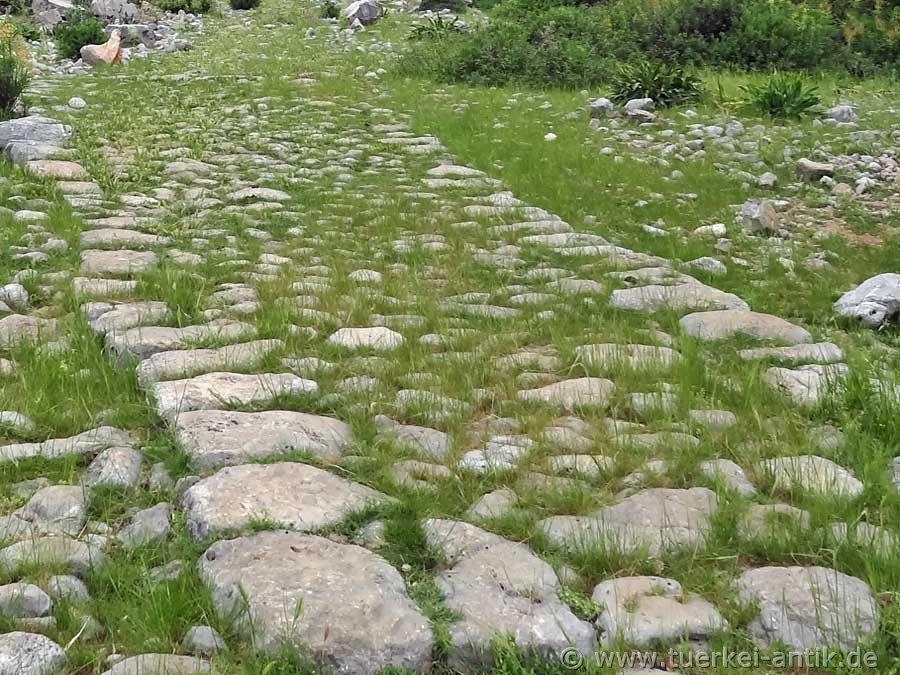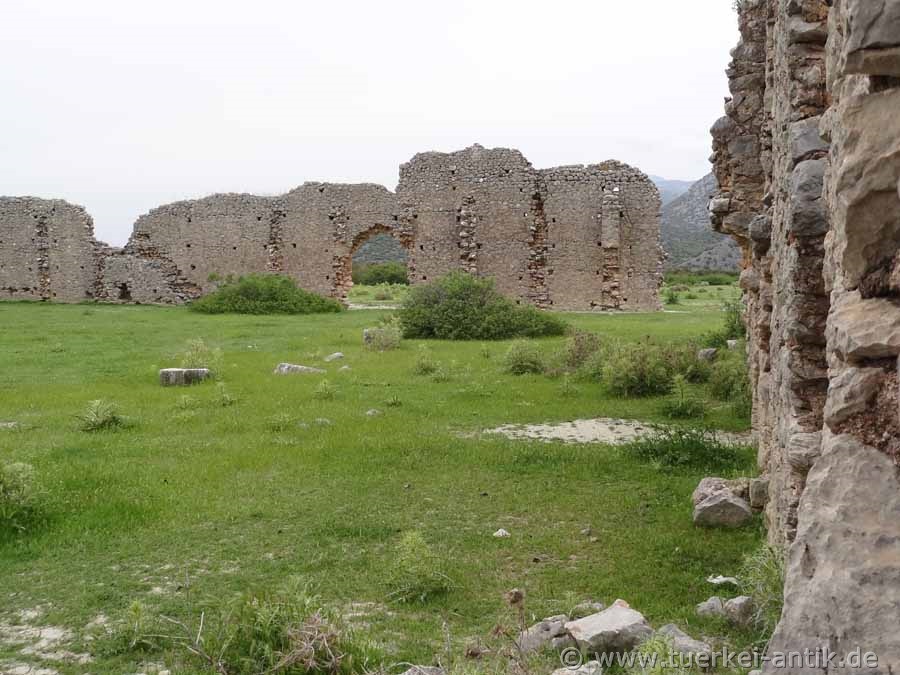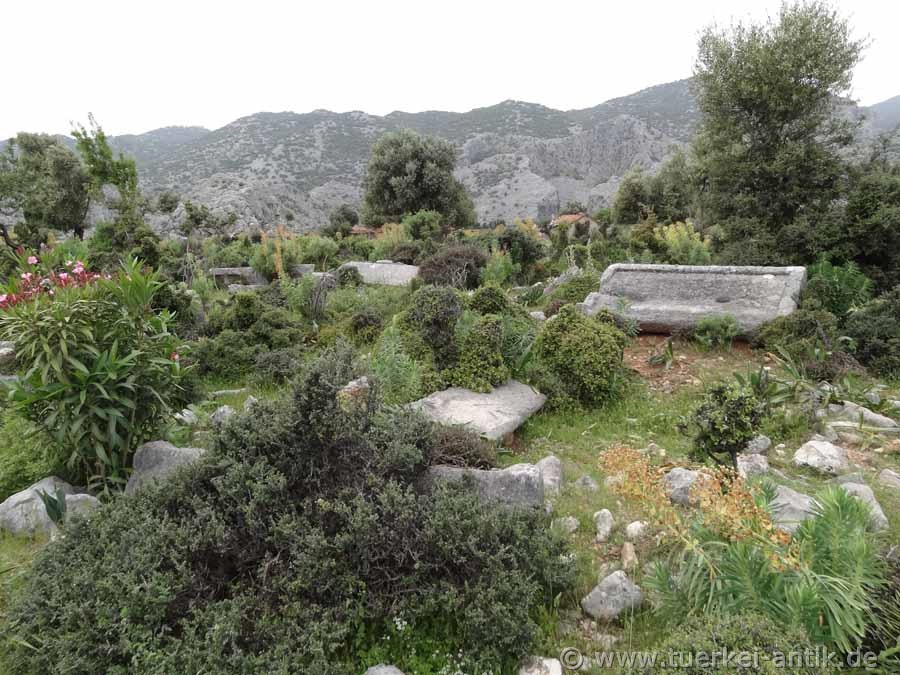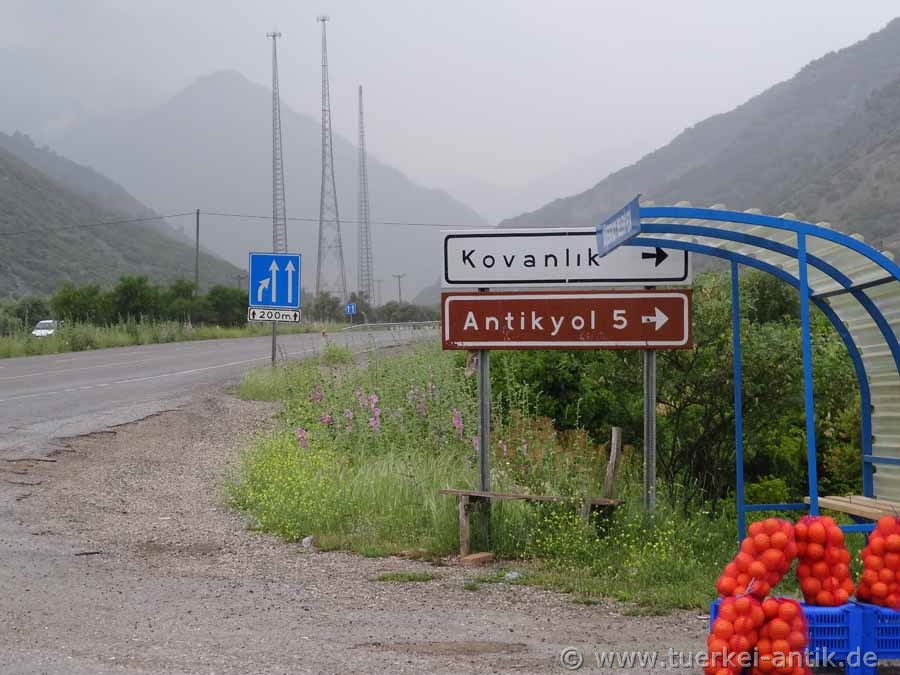 |
| Maximianupolis | |||
|
|
| ||
| The pamphlic end of the Via Sebaste | |||
|
Already in Hellenistic times it became necessary to create a transition from Pamphylia over the Taurus Mountains to Pisidia. One of the most important trade routes from Pisidia to the cities on the coast led through this transition. It was the shortest connection to the Pisidian cities Ariassos and Sia, but also to Adada, Antiochia, Kremna and Sagalassos on the other side of the mountains. |
|||
|
|
|||
| The Via Sebaste | |||
|
Already fortified in Roman times, it was repeatedly repaired and maintained by the Byzantines, Seljuks and Ottomans. |
|||
|
|
|||
| Probably one of the first buildings of the later city. The customs building. | |||
|
The city at the beginning and end of the road probably developed from the necessity of collecting goods and assembling caravans before crossing the mountains. It is almost certain that customs duties etc. have been imposed for the use of the road. Fees due. The top building on the street is thought to be a former customs building. |
|||
|
|
|||
| The Byzantine Barracks | |||
|
Towards the end of the Byzantine era, a Byzantine garrison was established in Maximianupolis and considerable units were stationed in a barracks in the lower part of the city. |
|||
|
|
|||
| Within the Byzantine barracks | |||
|
Parts of the outer walls of the barracks measuring about 80 x 40 meters have survived the times. In various sources, the still imposing outer walls of the barracks are falsely described as Seljuk "Han" (caravanserai). Built in the years 1237 - 1246 under Sultan Giyaseddin Keyhüsrev II, Han (Kyrgyz Han) is located 7 km further south, has been completely renovated and repaired in 2008. |
|||
|
|
|||
|
|
|||
|
Building remains in the former city area |
|||
|
|
|||
|
Not many of the city's buildings have survived. It is striking that easily accessible buildings, mainly from Roman times, were almost completely demolished. The precisely hewn stones were perfectly suited for the construction of newer houses. |
|||
|
|
|||
|
|
|||
|
Smashed sarcophagi in the necropolis |
|||
|
|
|||
|
Numerous, partly richly decorated sarcophagi line the ancient street. The large necropolis in the lower, western part of the city is striking, in which all sarcophagi were so thoroughly smashed up that one has to ask oneself who this was and what may have triggered such a destructive fury. |
|||
|
|
|||
|
|
|||
|
The sign at the D650 to the antique road (and thus to Maximianupolis) |
|||
|
The ruins of Maximianupolis are about 40 km north of Antalya. You reach the city by taking the D650 (past Otogar, up the serpentines) in the direction of Burdur/Isparta. 27 km after the Otogar in Antalya, just before the D650 leads from the plain into the mountains, a road turns right. Follow signs to Kovanlık and on a brown sign with "Antikyol 5" (antique road 5 km). When you have passed the village Kovanlık, you will come to a canal bridge, before which you turn left. The well navigable path now leads along the canal directly to the ancient city of Maximianupolis. |
|||
| Photos: @chim | |||
| Translation aid: www.DeepL.com/Translator | |||
| Source: Wikipedia and others | |||
|
|
|||





